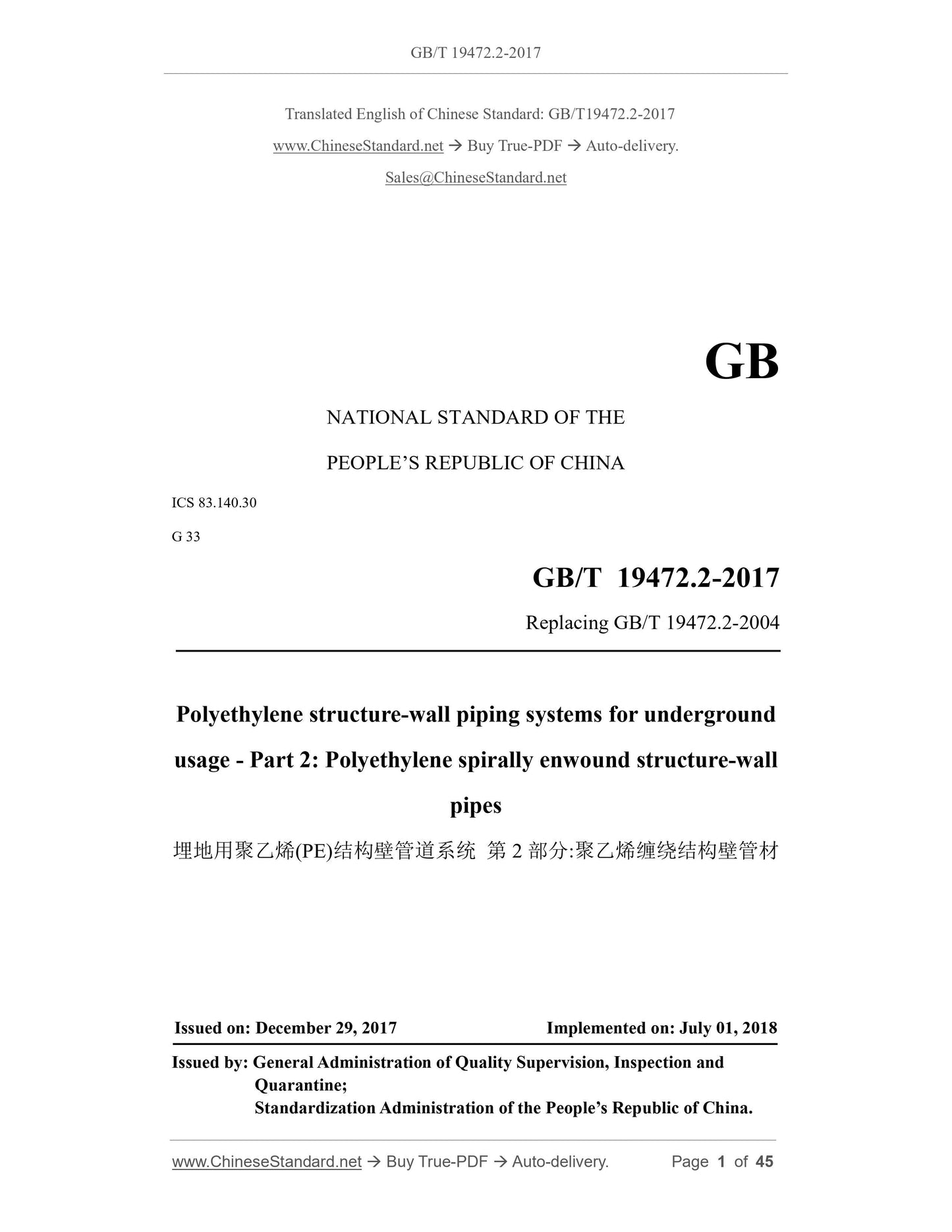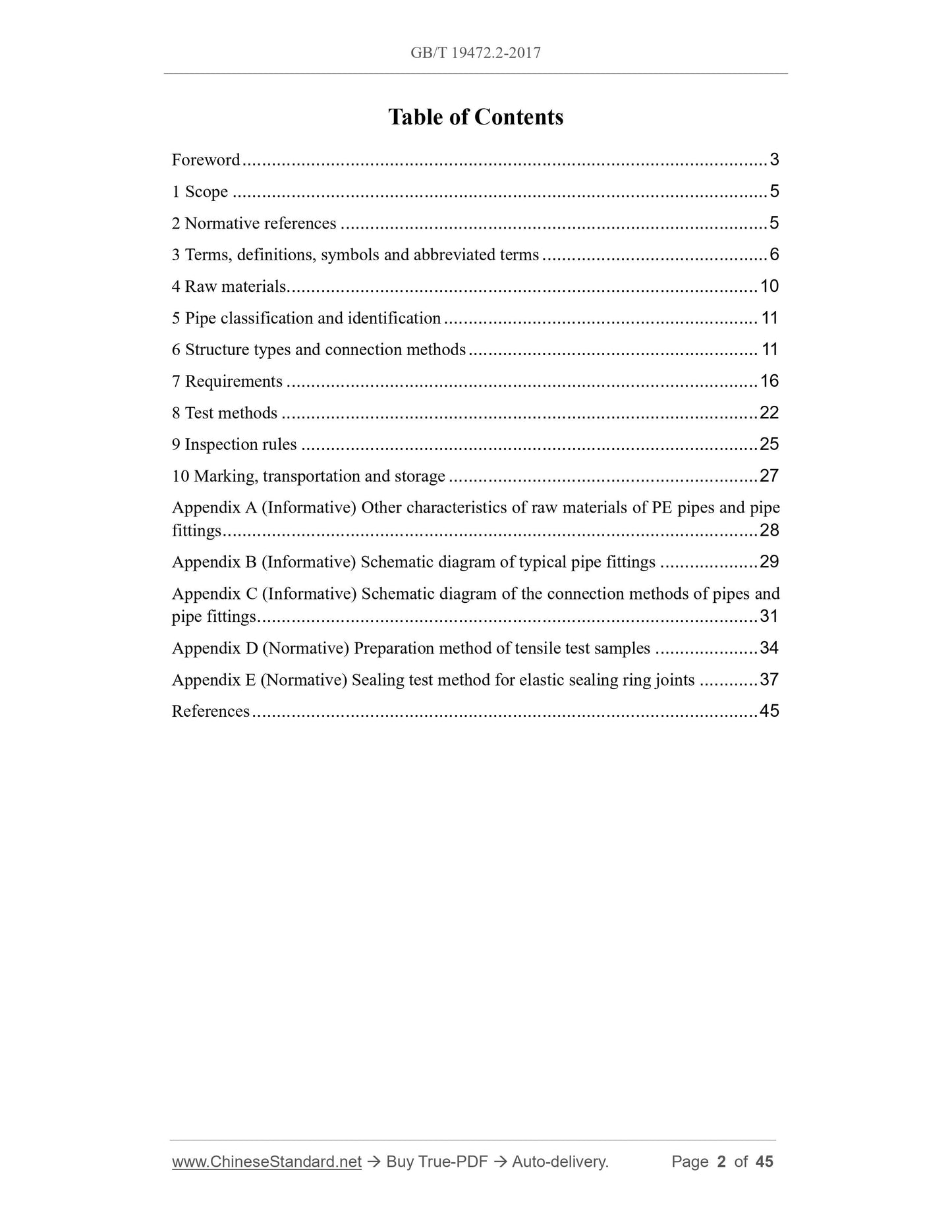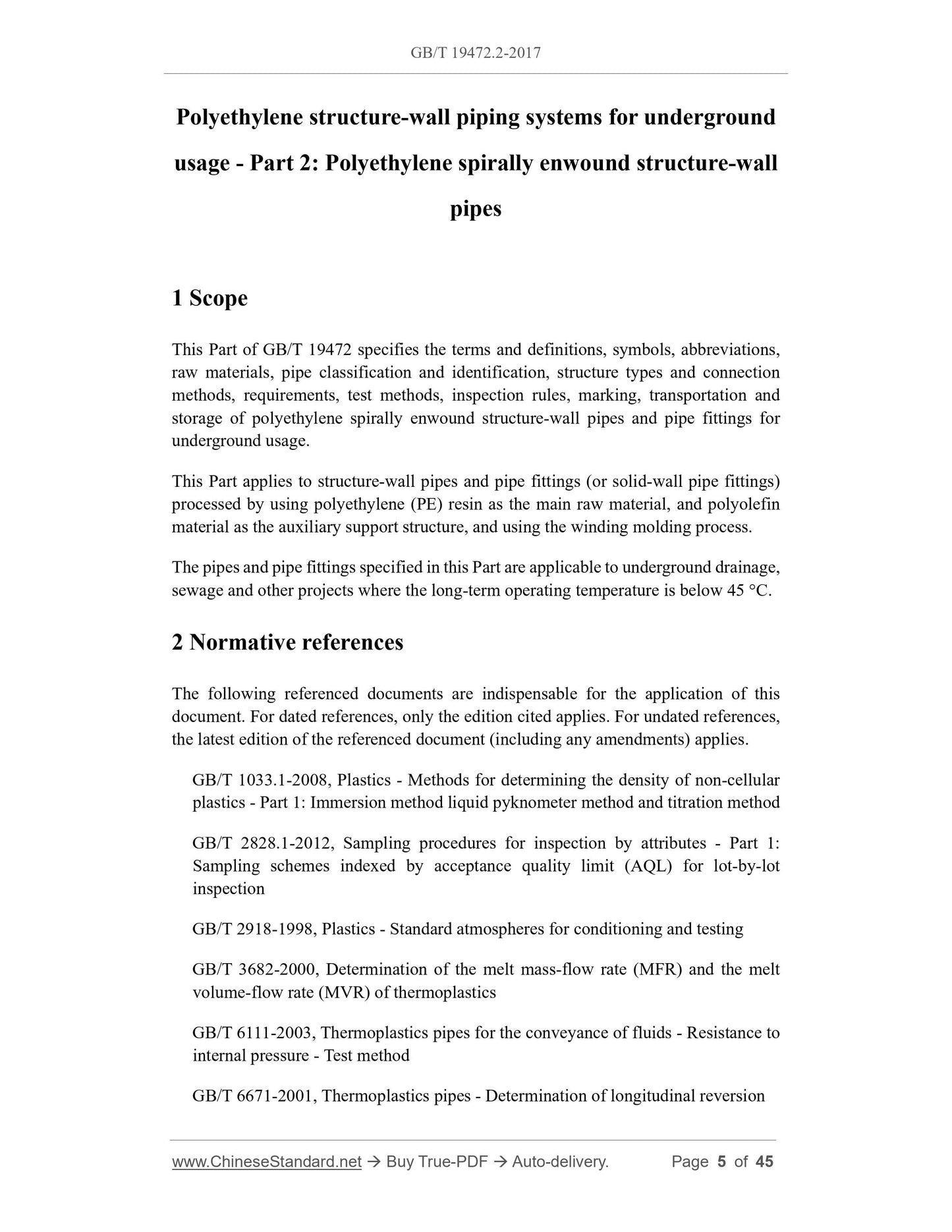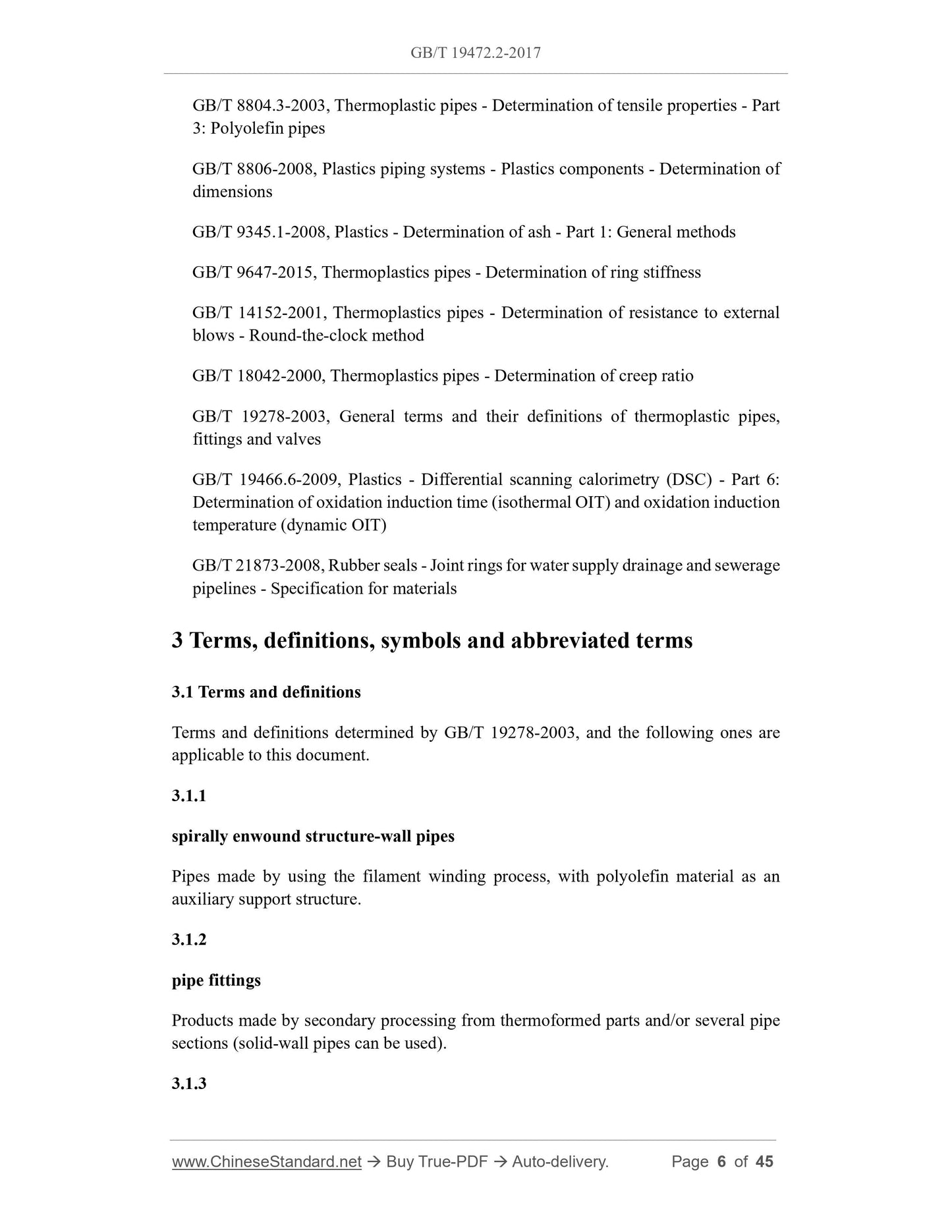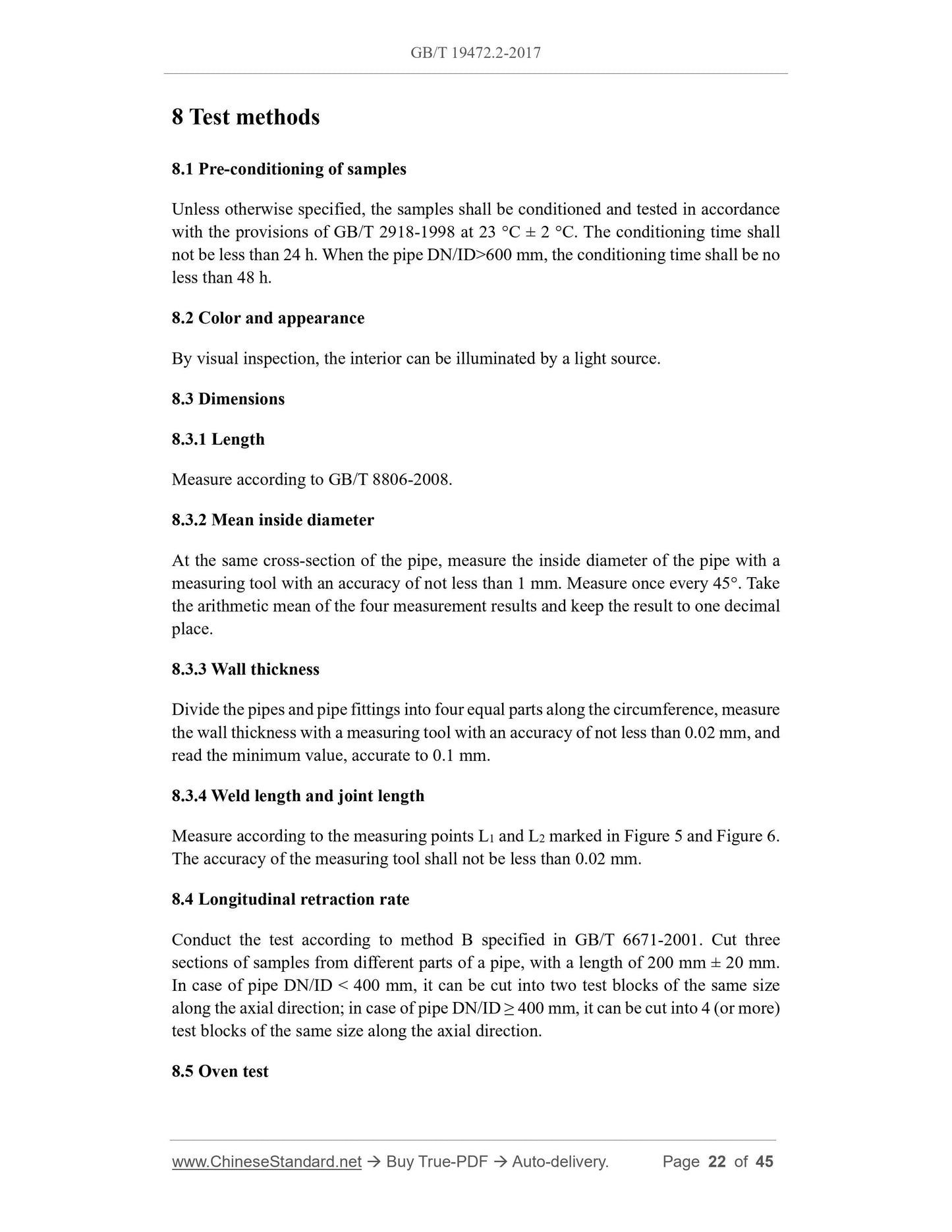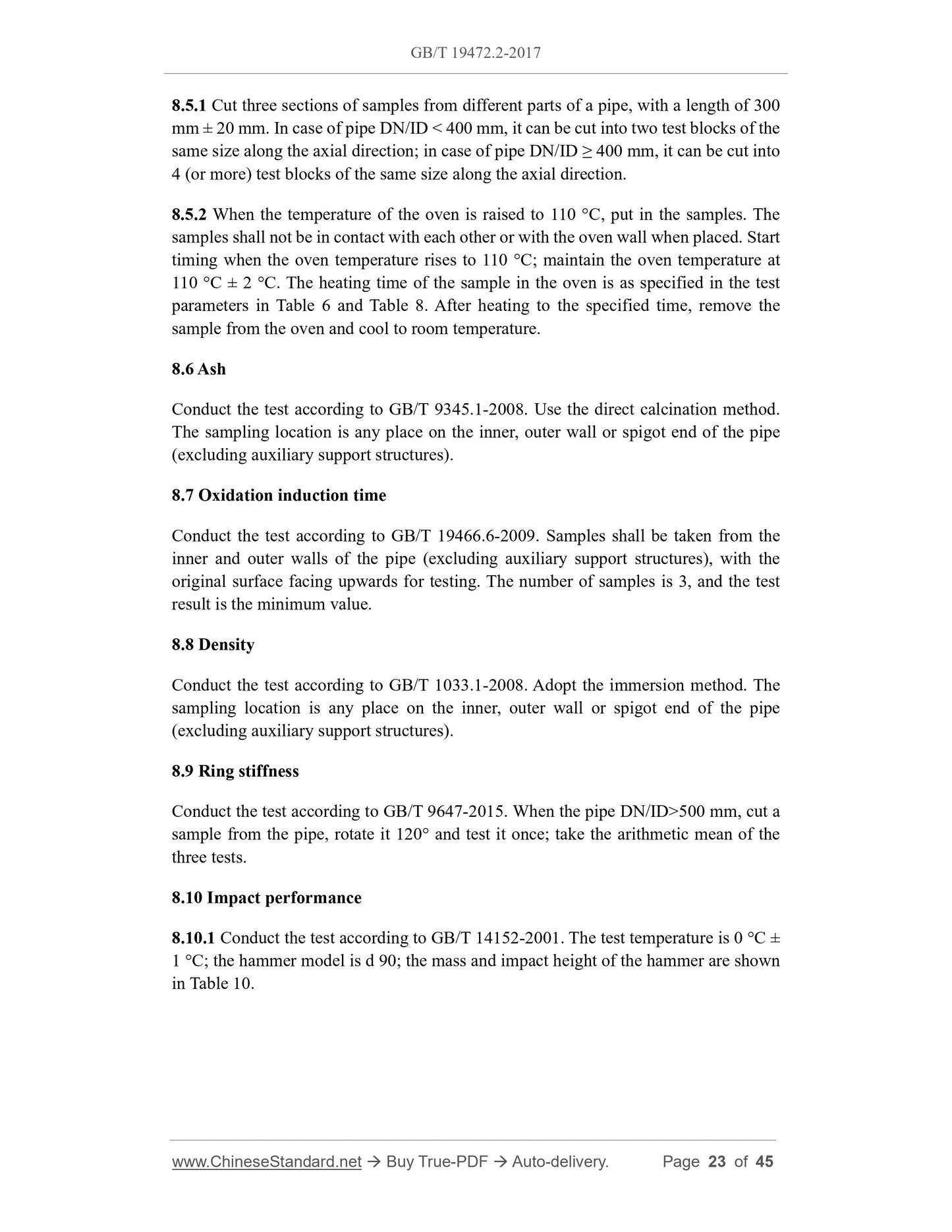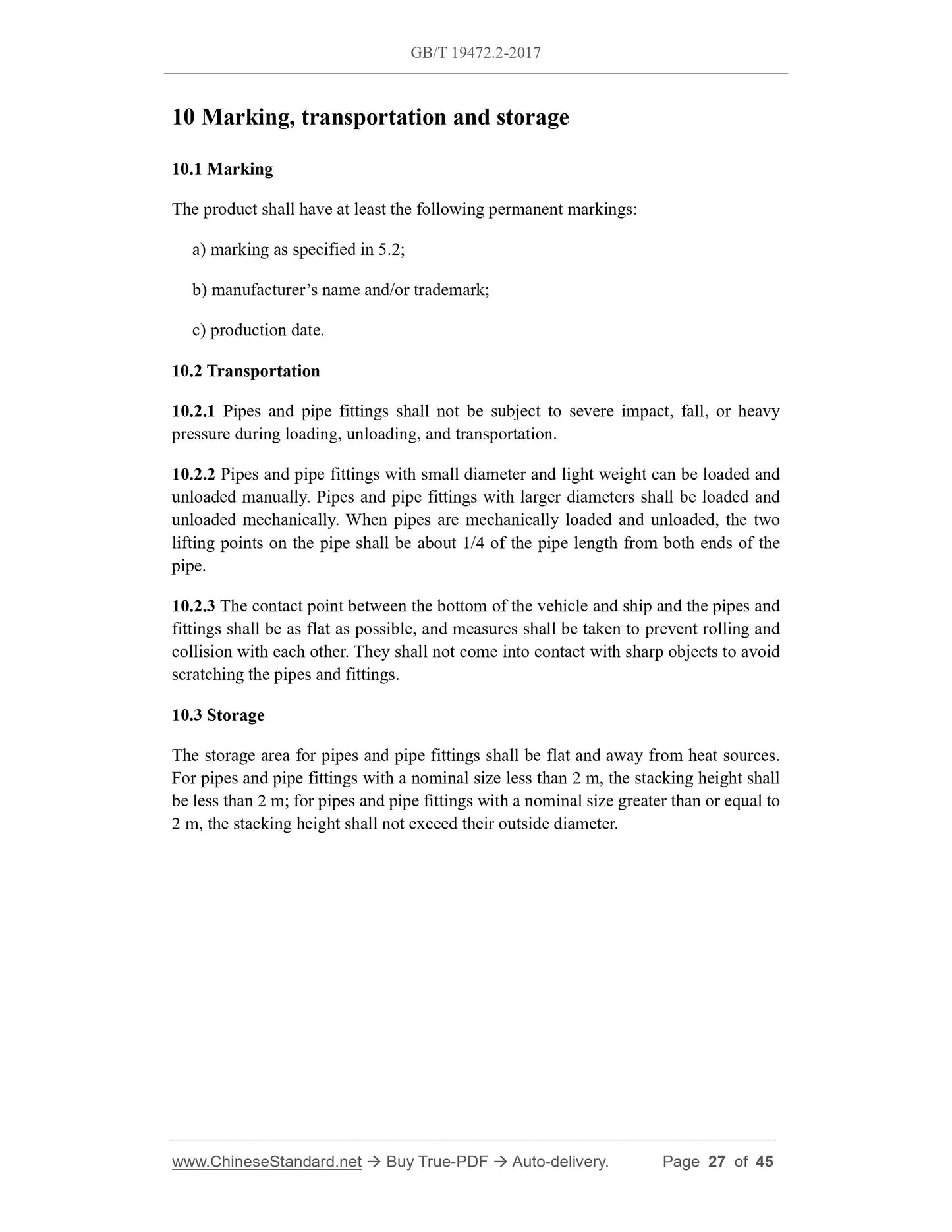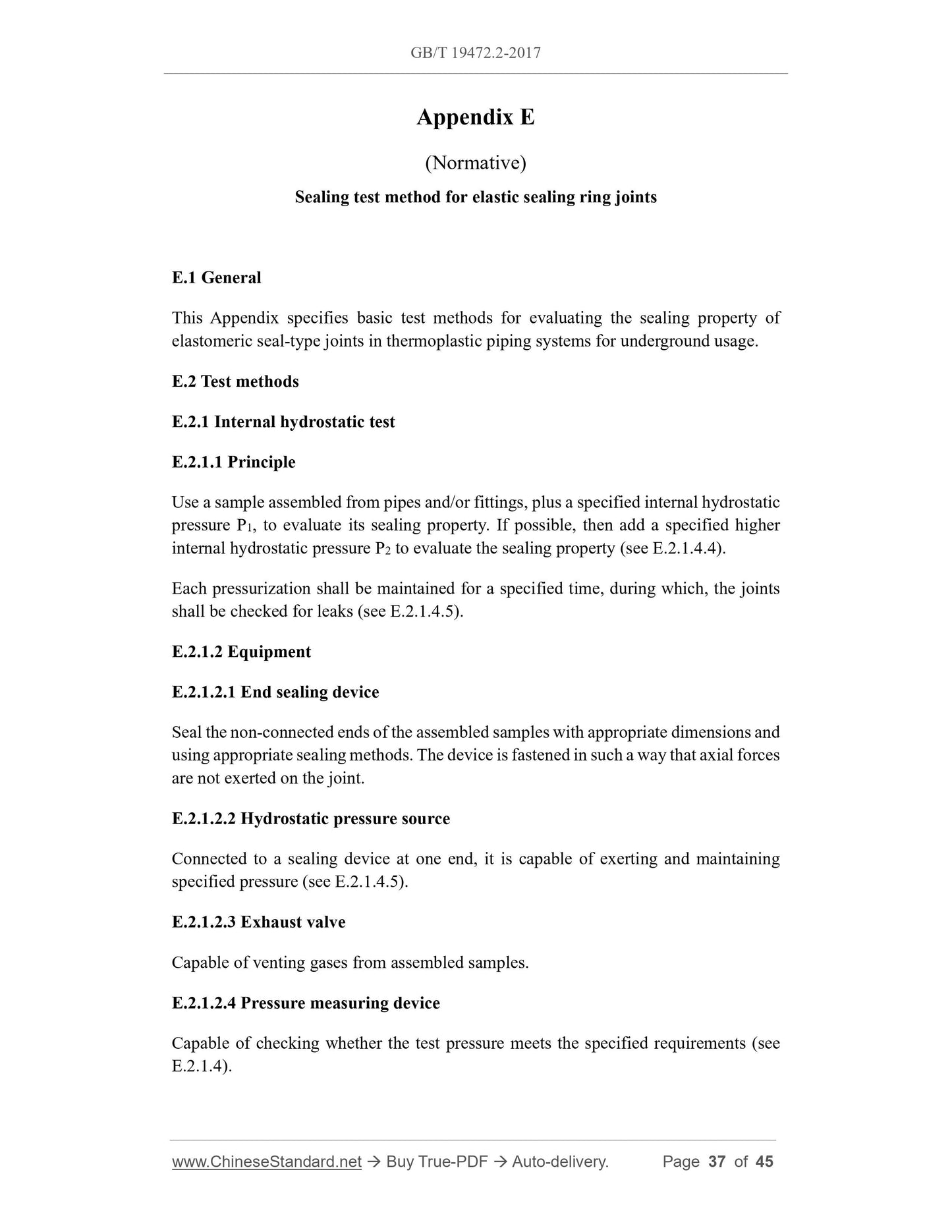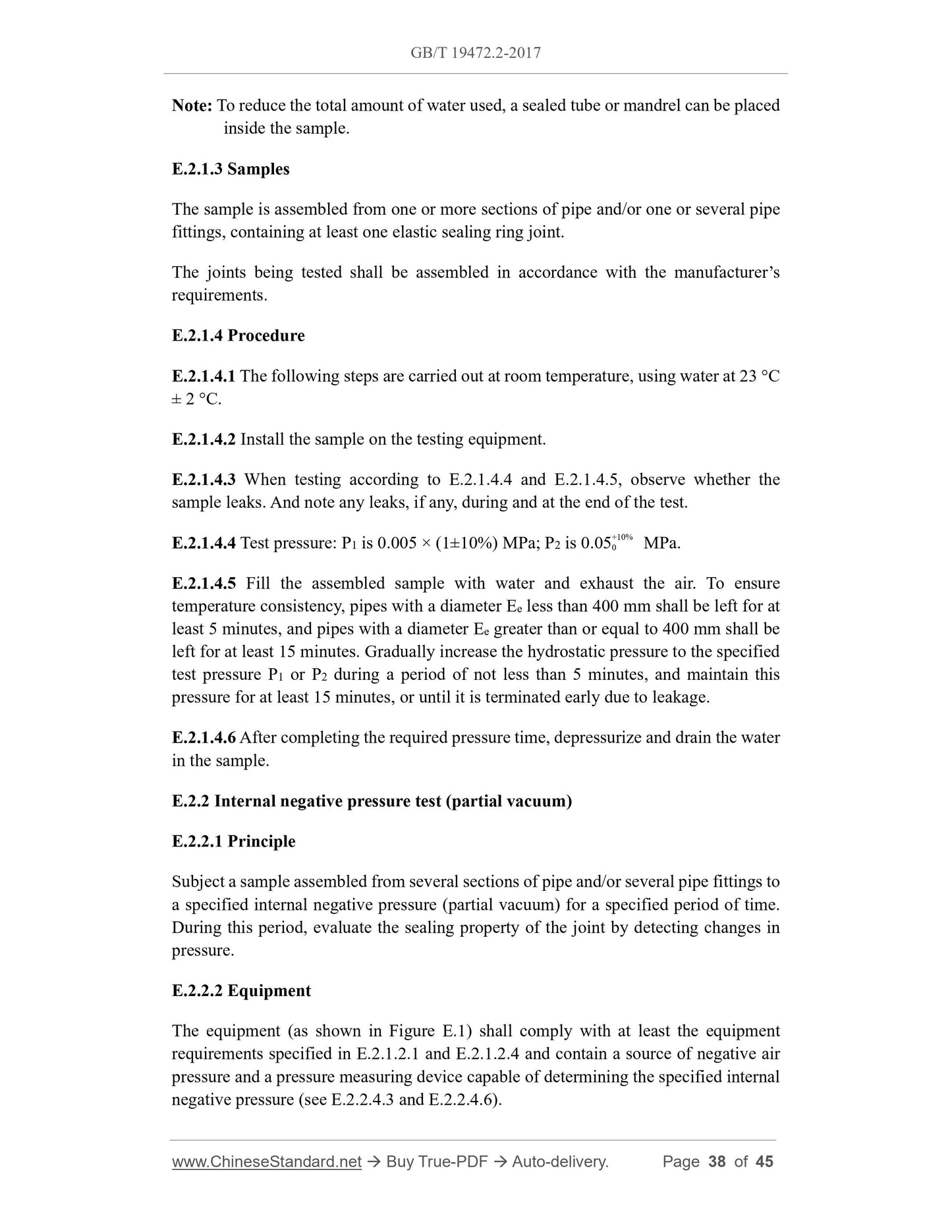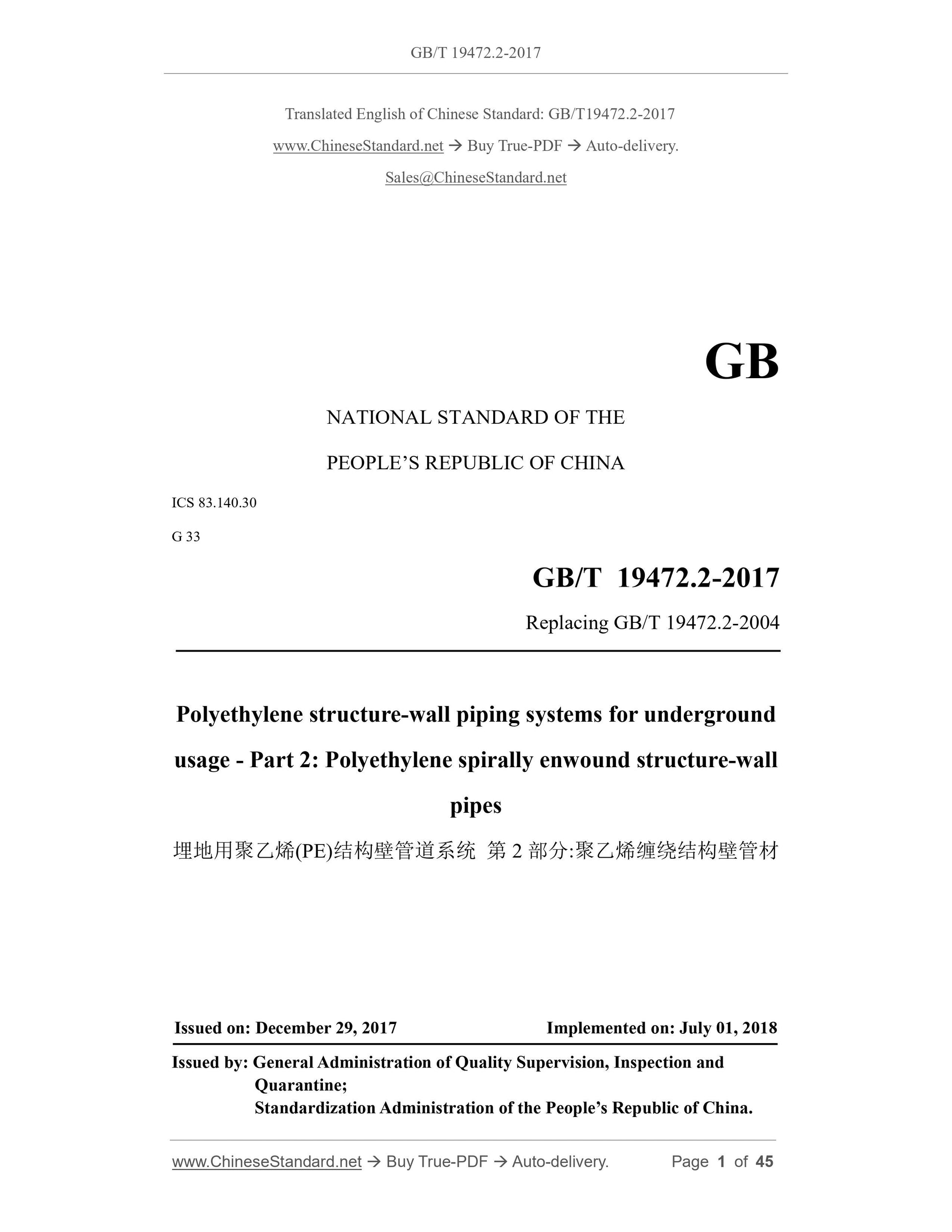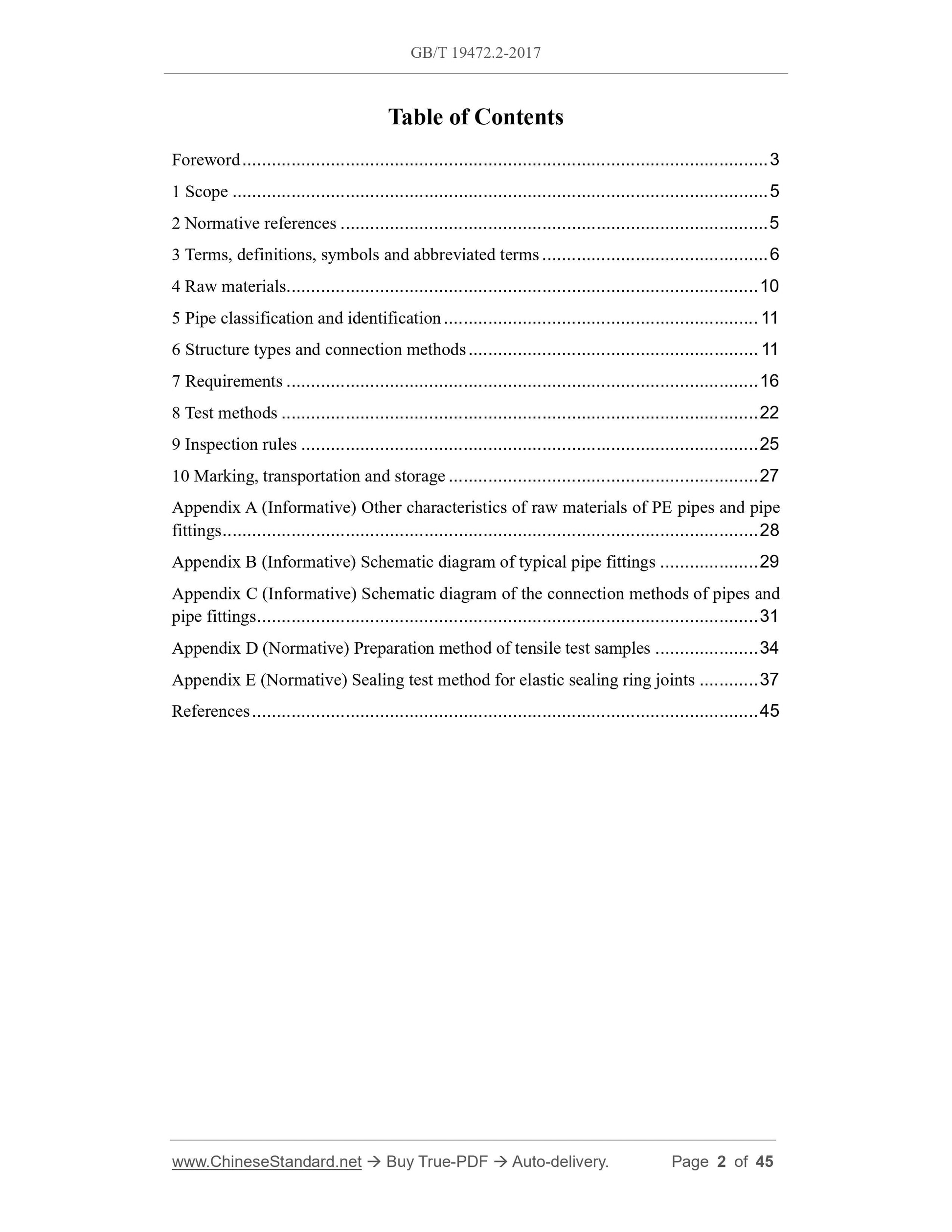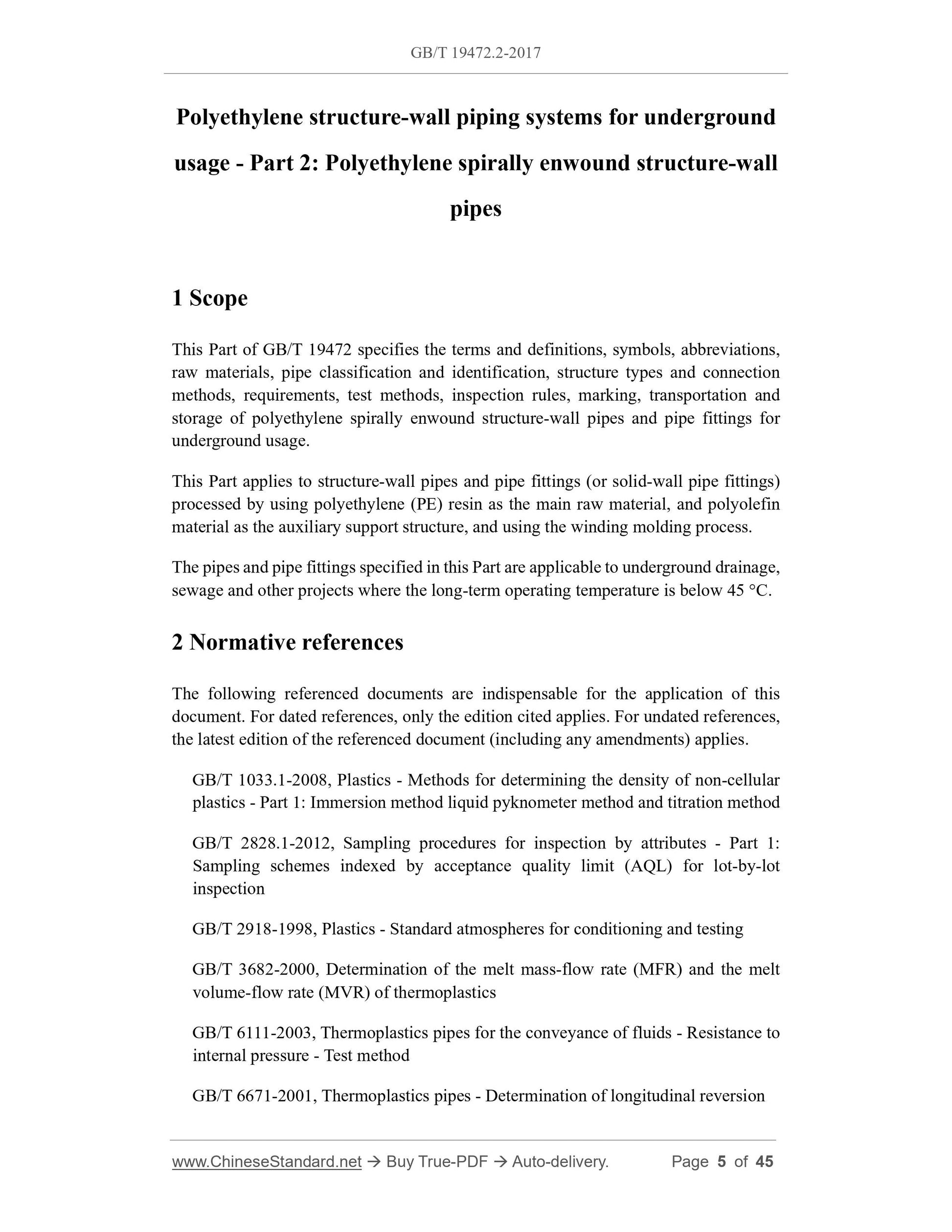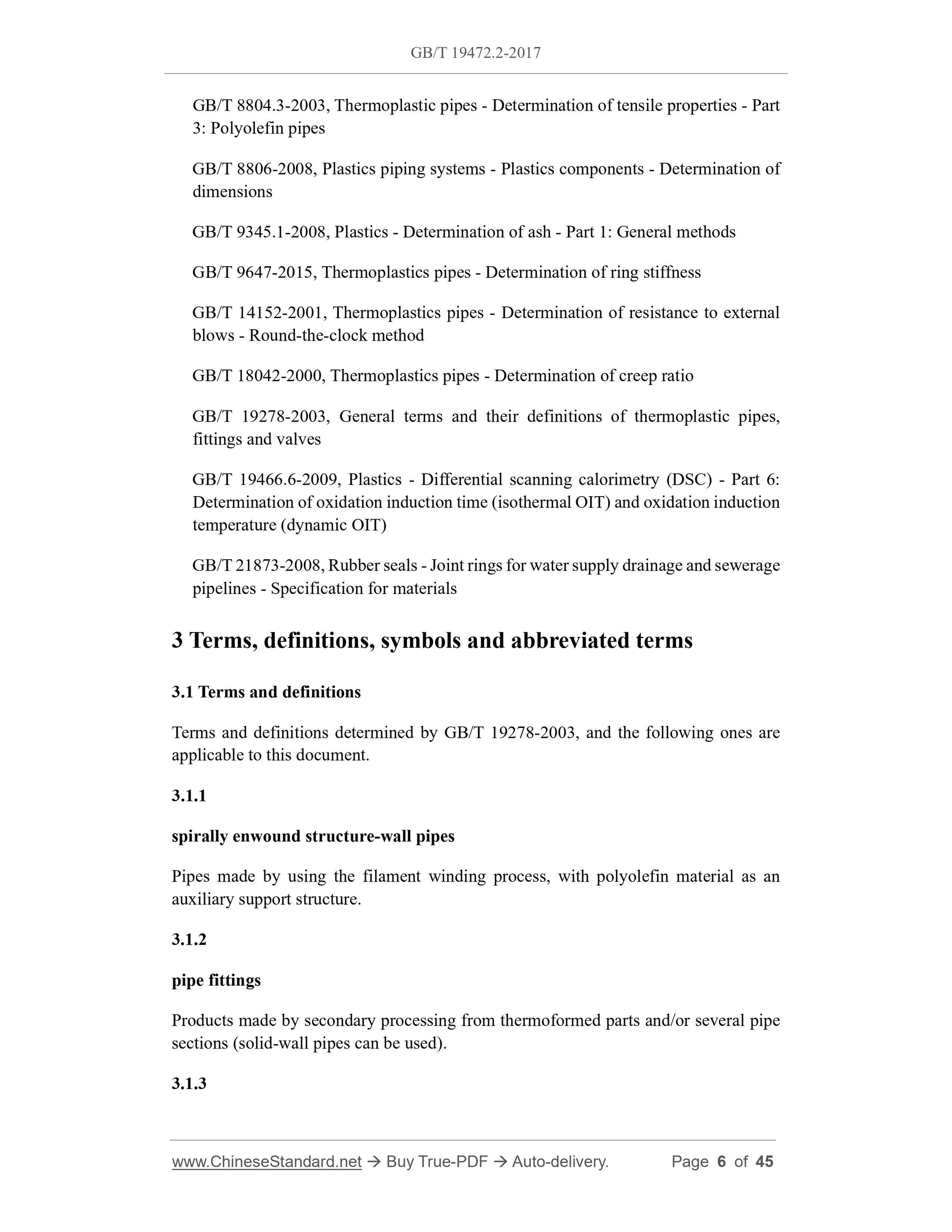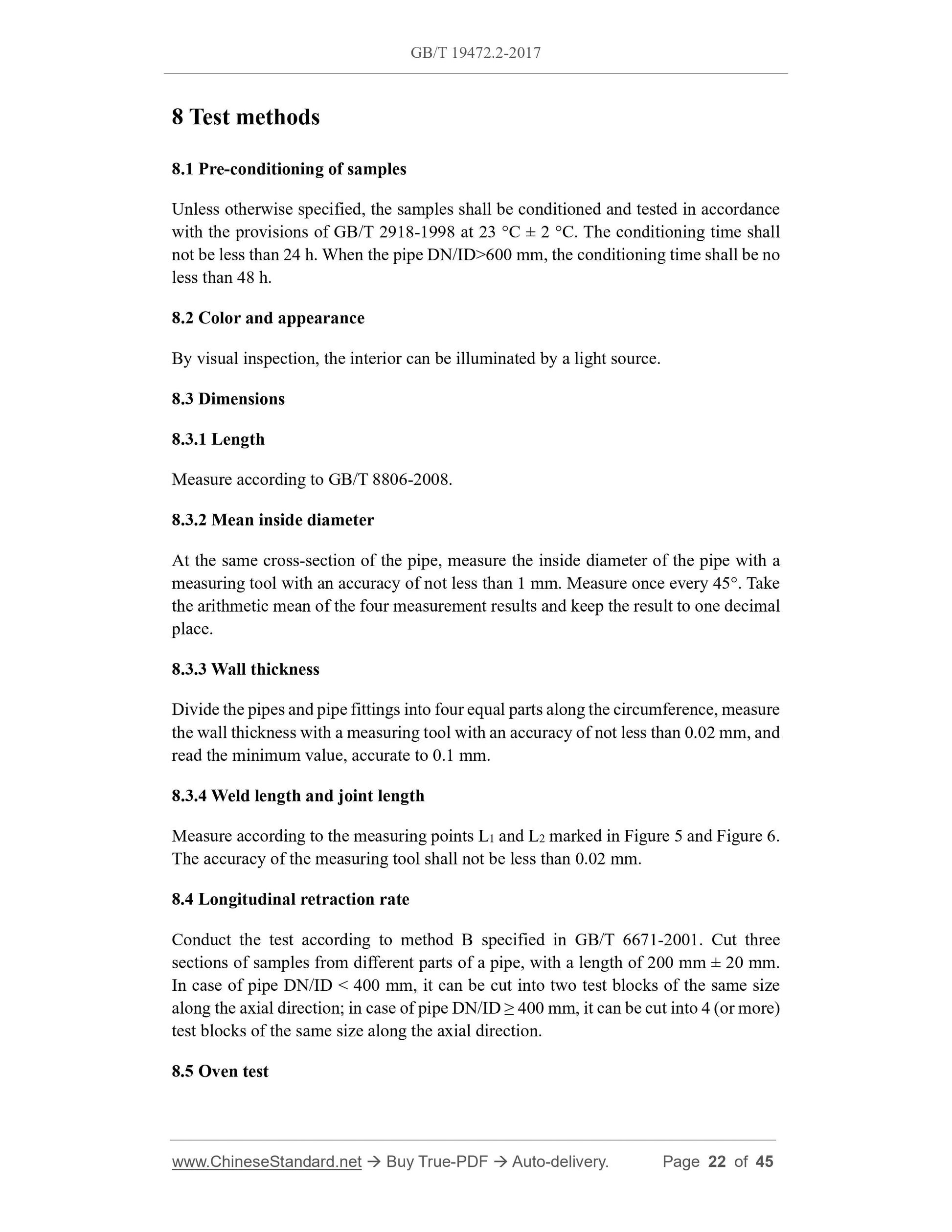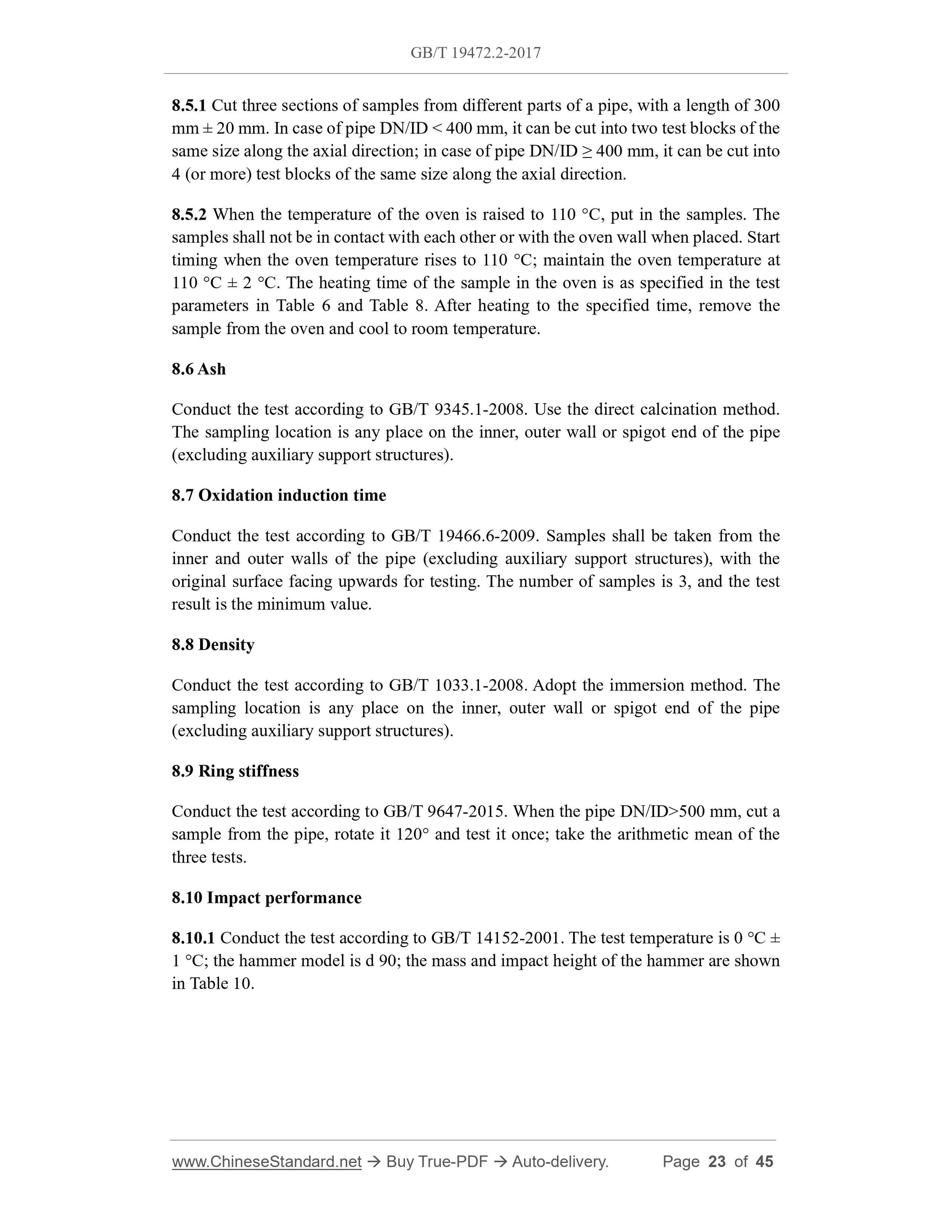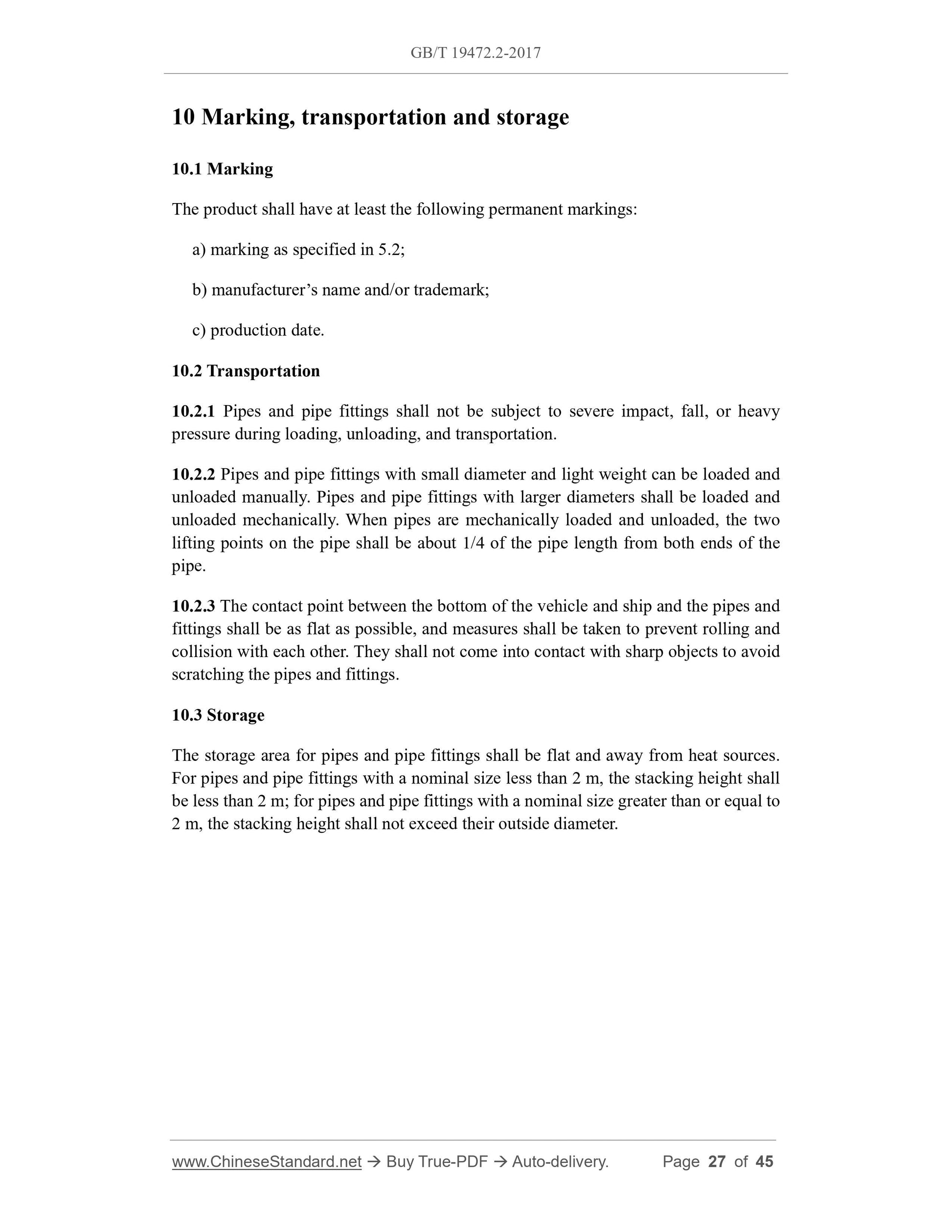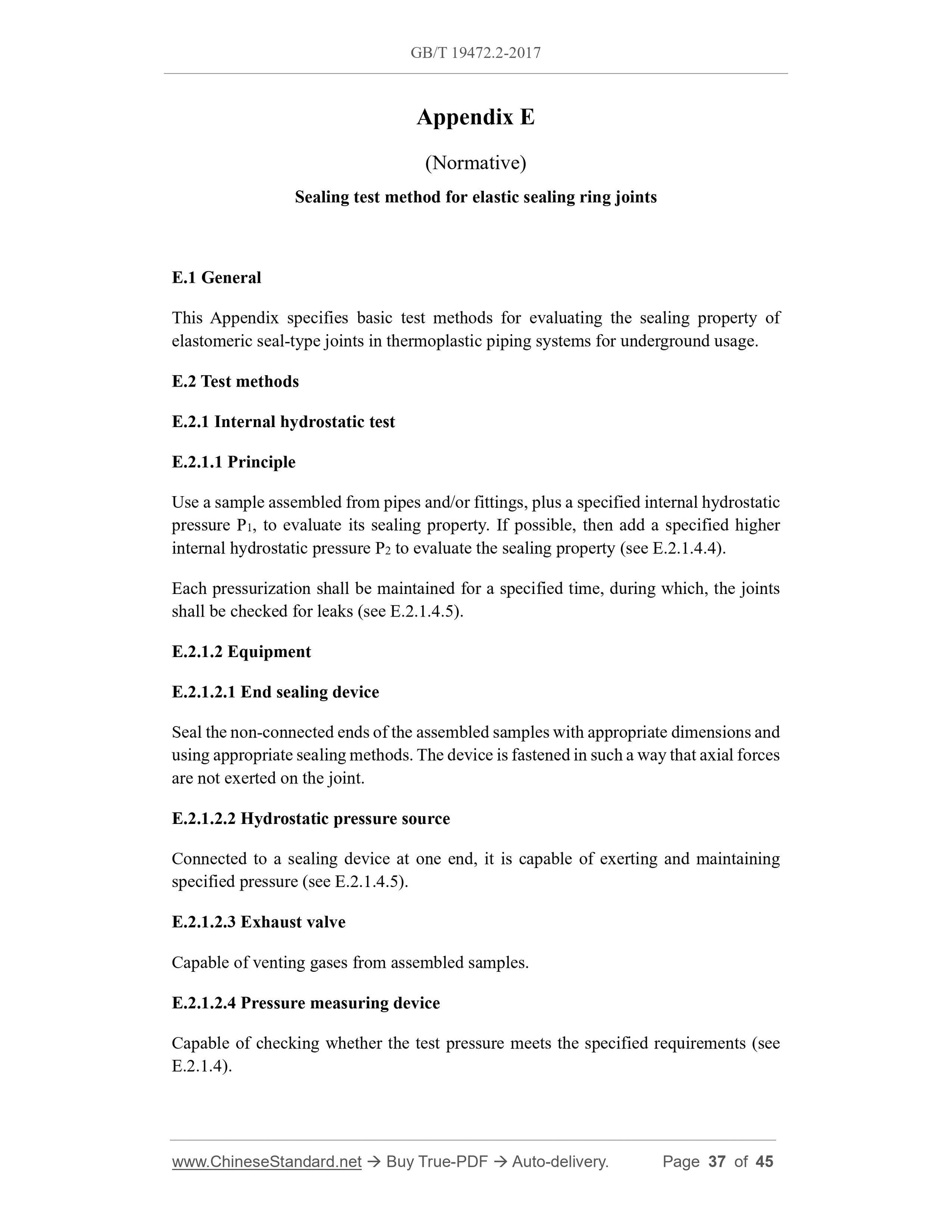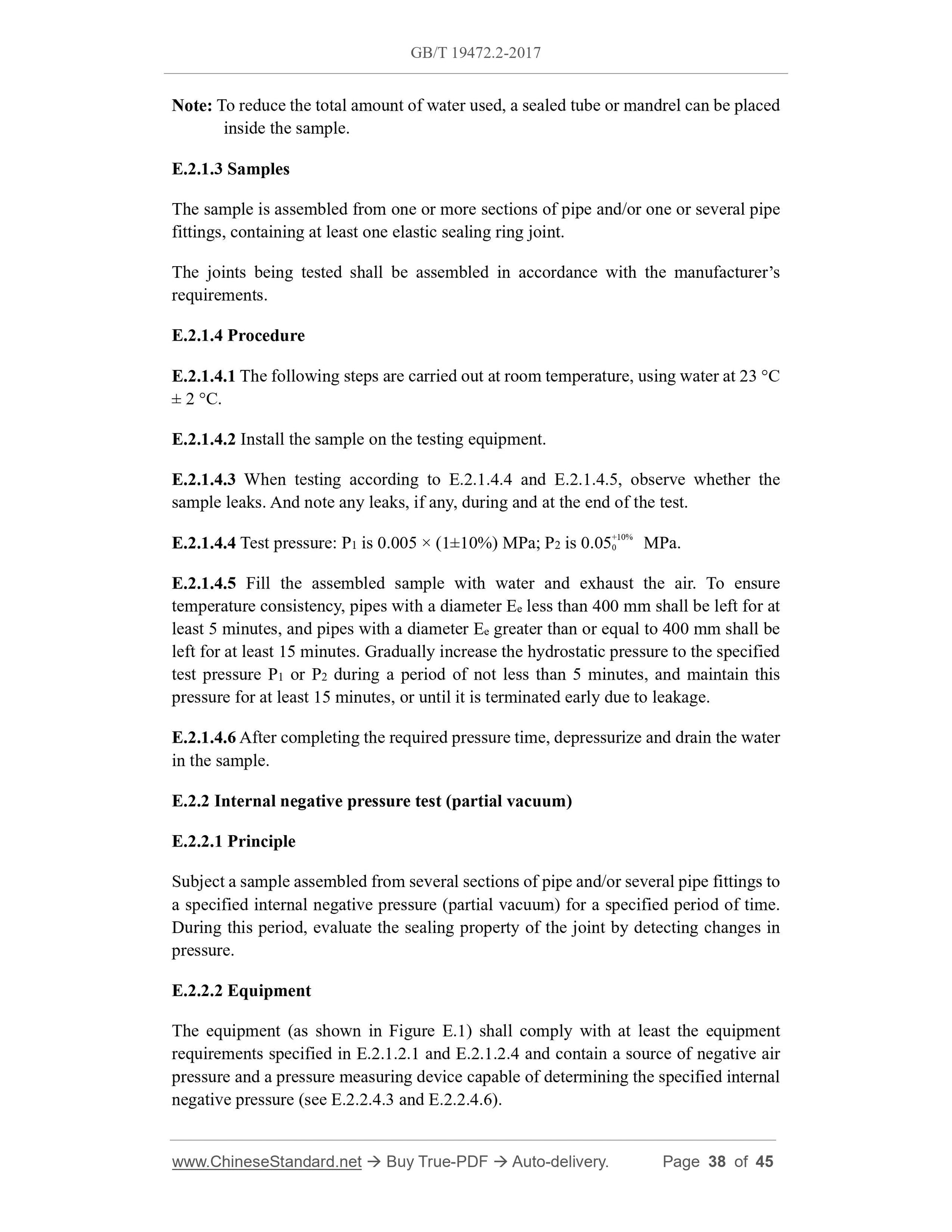1
/
of
9
www.ChineseStandard.us -- Field Test Asia Pte. Ltd.
GB/T 19472.2-2017 English PDF (GB/T19472.2-2017)
GB/T 19472.2-2017 English PDF (GB/T19472.2-2017)
Regular price
$500.00
Regular price
Sale price
$500.00
Unit price
/
per
Shipping calculated at checkout.
Couldn't load pickup availability
GB/T 19472.2-2017: Polyethylene structure-wall piping systems for underground usage - Part 2: Polyethylene spirally enwound structure-wall pipes
Delivery: 9 seconds. Download (and Email) true-PDF + Invoice.Get Quotation: Click GB/T 19472.2-2017 (Self-service in 1-minute)
Newer / historical versions: GB/T 19472.2-2017
Preview True-PDF
Scope
This Part of GB/T 19472 specifies the terms and definitions, symbols, abbreviations,raw materials, pipe classification and identification, structure types and connection
methods, requirements, test methods, inspection rules, marking, transportation and
storage of polyethylene spirally enwound structure-wall pipes and pipe fittings for
underground usage.
This Part applies to structure-wall pipes and pipe fittings (or solid-wall pipe fittings)
processed by using polyethylene (PE) resin as the main raw material, and polyolefin
material as the auxiliary support structure, and using the winding molding process.
The pipes and pipe fittings specified in this Part are applicable to underground drainage,
sewage and other projects where the long-term operating temperature is below 45 °C.
Basic Data
| Standard ID | GB/T 19472.2-2017 (GB/T19472.2-2017) |
| Description (Translated English) | Polyethylene structure-wall piping systems for underground usage - Part 2: Polyethylene spirally enwound structure-wall pipes |
| Sector / Industry | National Standard (Recommended) |
| Classification of Chinese Standard | G33 |
| Classification of International Standard | 83.140.30 |
| Word Count Estimation | 34,366 |
| Date of Issue | 2017-12-29 |
| Date of Implementation | 2018-07-01 |
| Older Standard (superseded by this standard) | GB/T 19472.2-2004 |
| Regulation (derived from) | National Standards Bulletin 2017 No. 32 |
| Issuing agency(ies) | General Administration of Quality Supervision, Inspection and Quarantine of the People's Republic of China, Standardization Administration of the People's Republic of China |
Share
